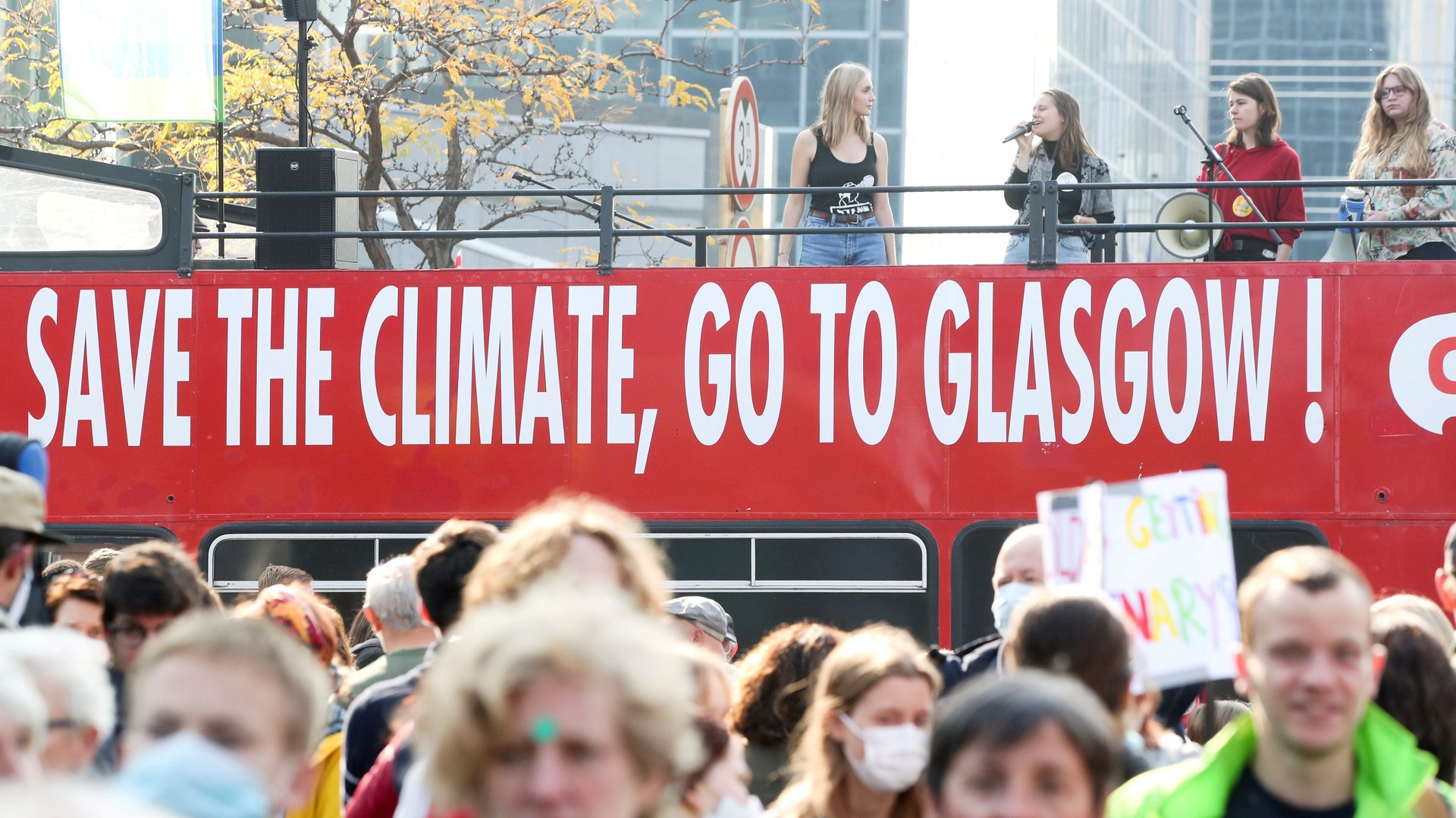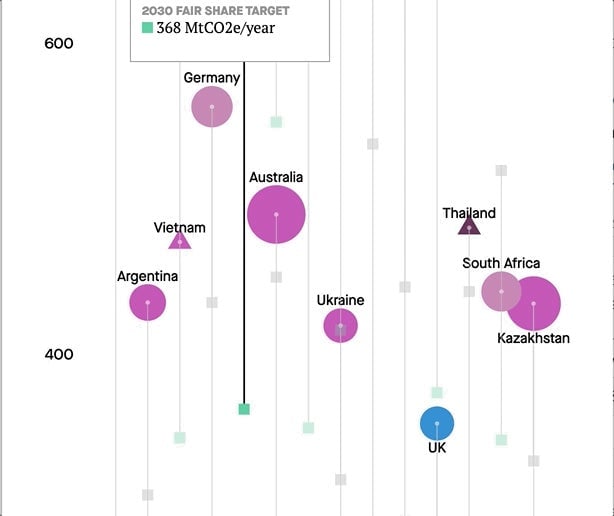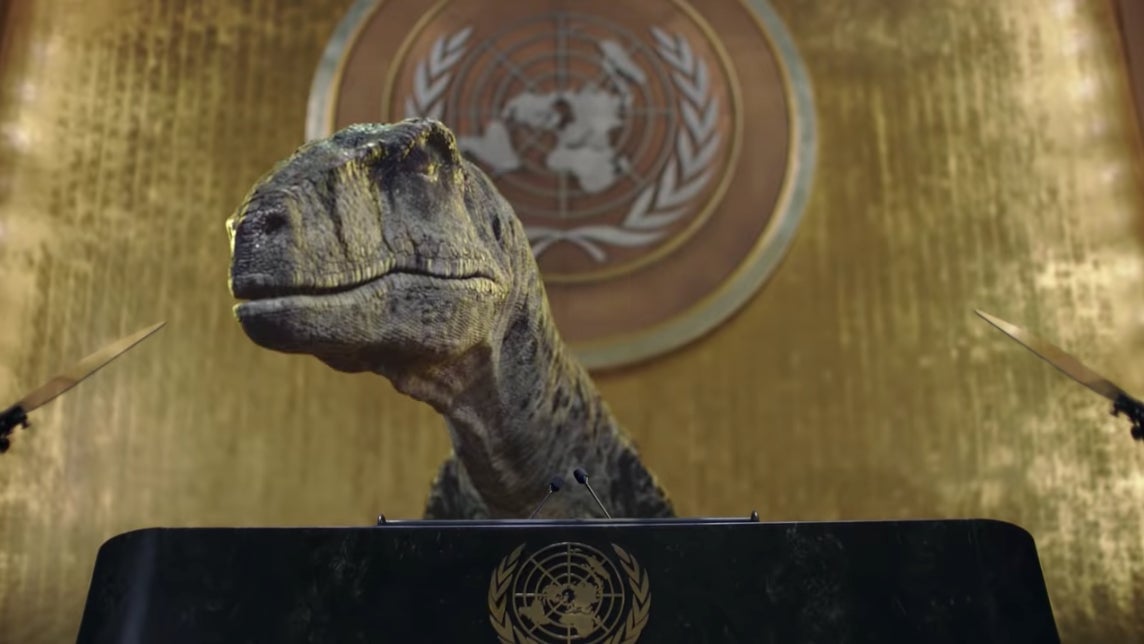We’re done negotiating
Hi Quartz readers,


Hi Quartz readers,
In December 2015, in a converted regional airport outside Paris, representatives from nearly every government on Earth celebrated their agreement on the most ambitious and sweeping global climate accord ever. For the first time, developed and developing countries representing more than 95% of global greenhouse gas emissions committed to a common framework to slow global warming. The Paris Agreement (pdf), decades in the making, was built on painstaking compromises defining the rules of the global response to climate change.
It turns out that was the easy part.
Over the next two weeks, many of those same negotiators will meet again in Glasgow, Scotland for COP26 (COP stands for Conference of the Parties to the UN Framework Convention on Climate Change). These summits happen every year, but this one is special. It marks the first five-year interval after Paris (technically six, because, you know)—a deadline for countries to demonstrate tangible progress and ratchet up climate ambitions.
Since the first one in Berlin in 1995, COPs have centered on negotiation. Now that process is more or less done. What remains is for countries to deliver on their promises to keep temperature increases “well below” 2°C (3.6°F) compared to pre-industrial levels.
We should learn more of the details on how they expect to do so in Glasgow—and we’ll have them all in the Need to Know: COP26 email.
By the digits
195: Nations that signed on to the Paris Agreement in 2015
63: Countries that have publicly committed to net-zero targets
126: World leaders expected to attend COP26
600+: Days since Chinese president Xi Jinping last left the country; he will join the summit via video link
>30,000: Visitors expected in Glasgow over the next two weeks
£250 million ($343 million): Cost to provide security at COP26
Quotable
“This COP is about keeping 1.5 alive.” —Yamide Dagnet, the World Resources Institute’s director of climate negotiations, in an interview with Quartz on Oct. 11.
Two numbers that could change the world
- 1.5°C: The world has already warmed up to 1.2°C (2.7°F) above pre-industrial levels, nearly the maximum amount agreed on under the Paris Agreement. According to the authoritative pre-COP analysis published by the UN on Oct. 26, the world is now on track to warm 2.6 to 2.8°C by 2100 even if countries fulfill their stated commitments (by no means certain), although better than the worst-case scenario in a pre-Paris world.
- $100 billion: That’s how much climate financing rich countries agreed to raise annually by 2020, money that goes toward decarbonization and adaptation efforts in poor countries. But the actual figure only hit $79.6 billion in 2019, according to an October analysis (pdf) by the Canadian and German governments. It’s unlikely to hit $100 billion before 2023, and economists say even that goal is an order of magnitude below what’s needed.
COP26 is unlikely to “fix” these numbers. Most countries have already announced their finance and carbon goals for the year. Instead, the best possible outcome will be if political and business leaders can demonstrate at least enough momentum toward them that the Paris Agreement doesn’t devolve into recriminations.
Climate change jargon, explained
Net zero:The elimination of greenhouse gas emissions, mostly by curtailing fossil fuel use, and removing greenhouse gases from the atmosphere or waste streams; it’s the global emissions target for 2050 under the Paris accords.
Mitigation: Any activity aimed at reducing emissions, like replacing a coal-fired power plant with a wind farm.
Adaptation: Any activity aimed at protecting society from inevitable climate impacts, like building seawalls or diversifying economies away from climate-sensitive industries.
NDC: A Nationally Determined Contribution is a country’s official climate aspirations and method of achieving them, as required by the Paris Agreement. NDCs are meant to be updated with more ambitious goals every five years.
A Quartz membership can help make sense of all the buzzwords powering the global economy. Sign up today and get 40% off with the code COP26.
Countries are really behind on climate action
There is a massive gap between what is needed to attain the 1.5ºC limit and countries’ stated emission-reduction targets, particularly for the world’s largest polluters. Our interactive analysis breaks down what countries say they will do by 2030, and what they’re actually on track to achieve.

👀 what’s next
The key threads to follow during COP26:
💰 Climate finance: What new investments in adaptation and mitigation will countries and companies announce?
📝 New commitments: Some countries didn’t submit a more ambitious NDC—or a new NDC at all. Others submitted NDCs that are a little light on detail, or reliant on domestic legislation that hasn’t yet passed.
💸 Article 6: The section of the Paris Agreement that governs global carbon markets is one of the last crucial bits of text still being negotiated.
💼 Corporate net-zero promises. A slew of companies will roll out new climate pledges and net-zero commitments. Some may be genuine, but be wary of greenwashing.
One 🦖 thing
Last week, the UN released a video in which a dinosaur, voiced in English by actor Jack Black, urges humanity not to choose extinction.

Keep learning
- The climate change crisis is already here, but there’s still a chance to prevent the worst
- Which world leaders will—and won’t—be at COP26?
- COP26 heads to Glasgow even as the UK struggles with energy
- China’s Xie Zhenhua is the most important person attending COP26
- The UK published a Net Zero report about taxing beef and flights—and then deleted it
- The COP26 climate summit has corporate sponsors—and they’re already demanding changes
Our best wishes for a net-zero day. Get in touch with us at [email protected] and live your best Quartz life by downloading our iOS app and becoming a member. Today’s email was brought to you by Tim McDonnell, Amanda Shendruk, Michael Coren, and Liz Webber.